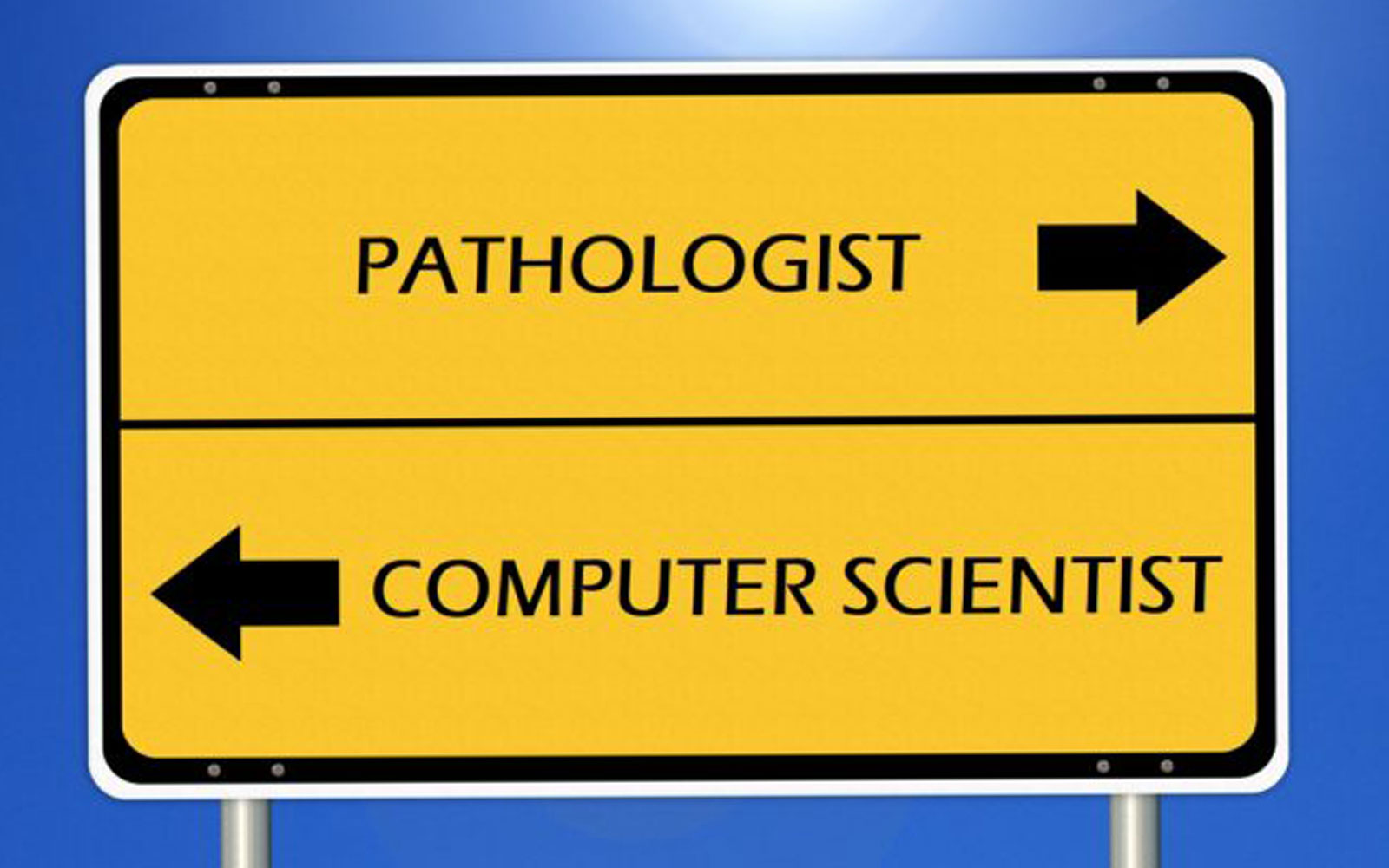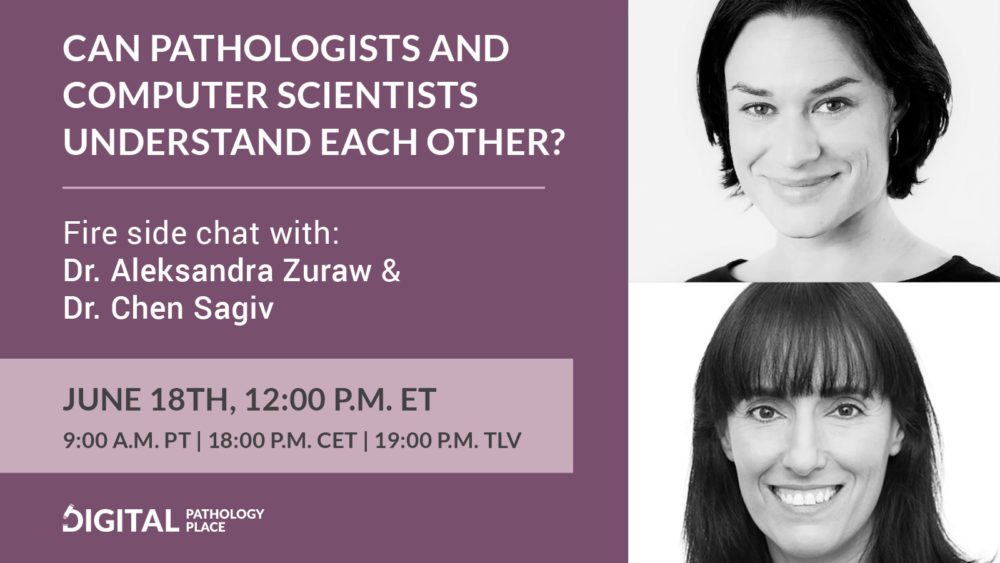Can pathologists and computer scientists understand each other?
Can pathologists and computer scientists understand each other’s disciplines in order to collaborate more efficiently? And more importantly, can they even understand each other? Why should they? Is it really necessary? I strongly believe it is!
To watch the webinar recording subscribe here
In the era of digital pathology pathologists and computer scientists are an inseparable team

There is no digital pathology without “digital” nor without “pathology”. The success of every aspect of digital pathology depends on good communication between pathologists and computer scientists.
They have been working together since the beginning of the discipline more than 30 years ago and as digital pathology technology advances, this collaboration expands and tightens.
It is no longer just individuals who want to do cool projects together but whole departments and organizations working together. How is it working out? Well, it must be working, otherwise, we would not move forward, but can it be improved?
Have you heard any of these labels?

- Pathologists think they are the smartest in the world.
- Pathologists are a conservative professional group.
- Pathologists are not computer savvy.
- Pathologists only love their microscopes.
Or any of these:
- Computer scientists lack communication skills.
- Computer scientists don’t know what regulated environment is.
- Computer scientists are introverts.
- Computer scientists don’t understand biology.
Even though these are stereotypes, they reflect the different personality types represented often in both professional groups which seem to be far from each other on the personality and expertise axis. With these very different attributes, they still needed to work together in a more or less optimal way. It seemed to be okay and mostly worked out…
and then artificial intelligence “happened”…
“Okay and mostly” is no longer enough
Computer scientists are fully immersed in this new technology experimenting and developing new faster and more scalable methods. Pathologists want to use artificial intelligence (AI) to accelerate their work and benefit the patients. Now, more than ever, computer scientists and pathologists need to work together efficiently to bring the two disciplines together and leverage the potential of AI to improve our health.

They already can understand each other (if they want to), but now they MUST understand each other. A solid, easily accessible bridge between these disciplines is in the making. We have pathology informatics fellowships and computer vision educational programs for medical imaging. Organizations like the Association of Pathology Informatics and Digital Pathology Association are leading the efforts on a global scale.
But is there anything happening on a local scale? Definitely! Every time a pathologist and a computer scientist are discussing ideas or working together on a project (be it a million-dollar grant, consortium, or a bachelor thesis) they are helping build this interdisciplinary bridge.
Let us start using it on a regular basis.
If you are interested in answers to the following questions:
- Can those two professions communicate better?
- What are their mutual expectations when working together?
- What are the lessons you have already learned and want to share with others?
- What is still missing?
and many other aspects of pathologist/ computer scientist collaboration, with a focus on artificial intelligence you are invited to a joint webinar organized by Digital Pathology Place and DeePathology Chen Sagiv and myself, will be having a fireside chat about what happens when a pathologist meets a mathematician…
To watch the webinar recording subscribe here















Comments are closed.